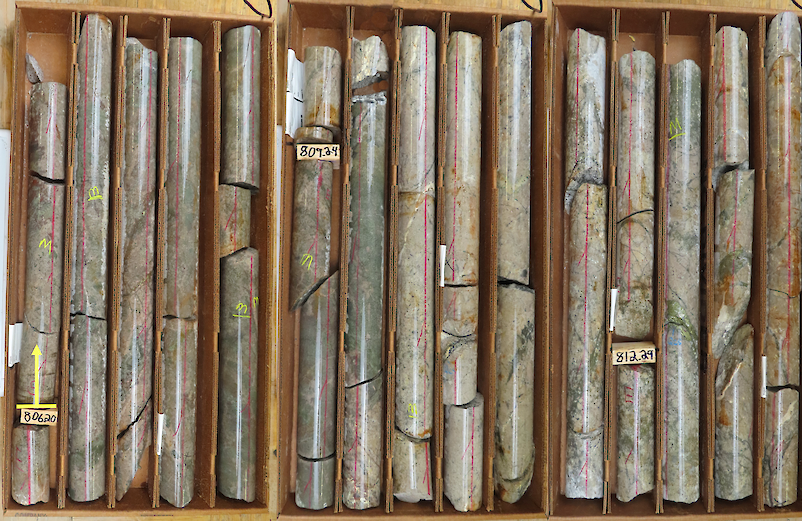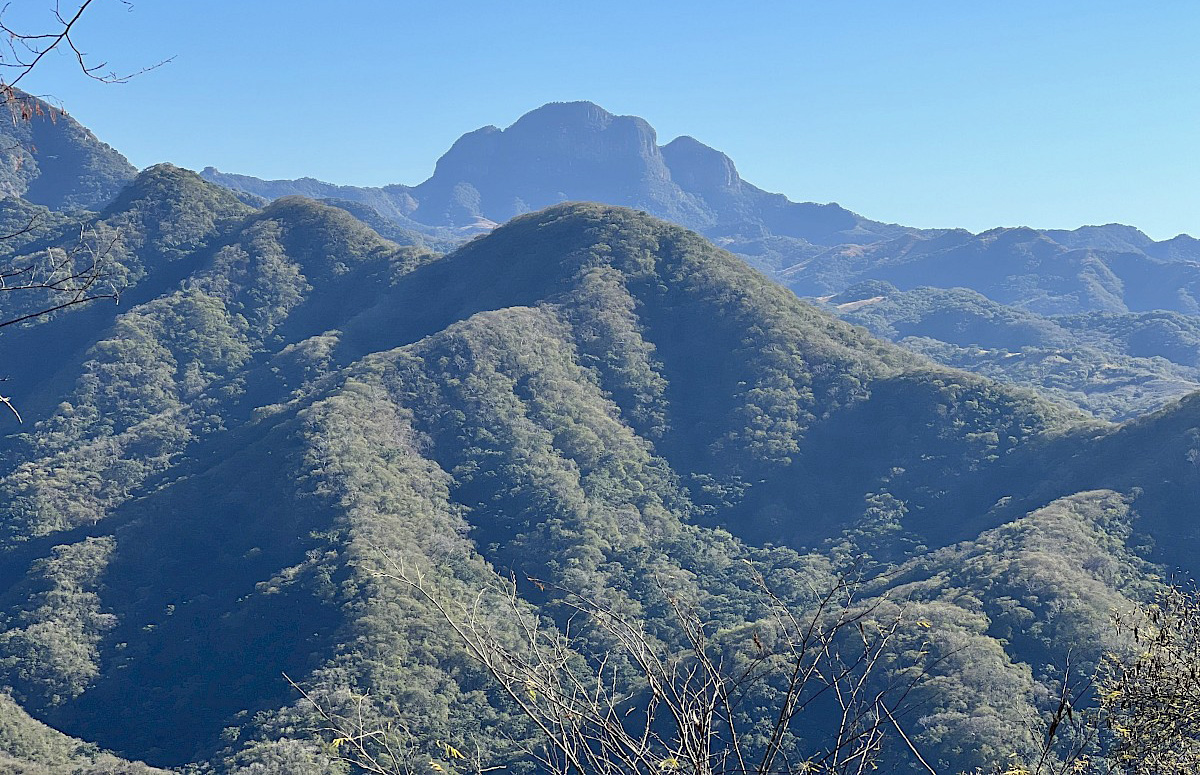The Gold Report: National Bank Financial began taking a defensive approach to gold equities in April by focusing on companies with strong balance sheets, which could fund their own growth and not have to go to the equity markets to survive. Does Alamos Gold Inc.'s (AGI:TSX) $780 million (M) takeover offer for Aurizon Mines Ltd. (ARZ:TSX; AZK:NYSE.MKT) validate that defensive thesis?
Paolo Lostritto: We were right to have a defensive approach, but we probably weren't defensive enough. Multiples contracted much more aggressively than even we expected. There was a raft of project delays, cancellations, and capital and operating cost increases that have decimated the space so much that less than half of the gold mining industry is actually making money based on our all-in-cost estimate from third quarter data.
"Royalty companies are positioned well in the current market environment."
On the surface, it looks as if Alamos is trying to take advantage of a multiple differential. Aurizon is spending more capital to ramp up production in 2014. The market correctly priced it in a lower multiple as it was deploying that capital. In the meantime, Alamos was enjoying a much higher multiple. I believe Alamos' intention is to create a new midtier producer with more than 330,000 ounces (oz)/year (330 Koz/year) and total cash costs of about US$535/oz.
TGR: In November, you noted some "underwhelming" M&A multiples. The Alamos deal is $4.65/share for each share of Aurizon, or $0.35/share above your 12-month target price for Aurizon. Do you consider the offer underwhelming or did it surprise you?
PL: The offer surprised a lot of people. It's a strategic shift for Alamos to go from heap-leach mining in Mexico to underground mining in Canada. We actually bumped our target to recognize that the company is in play and that different valuation metrics apply. It's no longer about fundamental value; it's about the takeout valuation. There's probably a sweetened offer to make the bid friendly in order to retain some key people. There are still several iterations to go through between the fairness opinion and the data room being opened.
TGR: Should investors expect similar deals throughout 2013?
PL: The market's been bifurcated into haves and have-nots. Executives are signaling that a number of junior companies are reaching out for a lifeline. It is an opportunity for companies that have cash and cash flow to dictate terms, take significant positions through private placements or purchase companies outright. There are a lot of opportunities for companies like Alamos to pull the trigger on good assets. The question everyone is trying to answer is: Is this the valuation bottom?
TGR: You said you perhaps needed to take an even more defensive approach to equities. Does that apply now? Should investors take an extreme defensive approach at this point?
PL: While things are fairly depressing in the gold mining space, we're starting to see early signs of lower deflation risk and the potential for improved velocity. We're not out of the woods yet, but there are early signs. Importantly, Basel III liquidity and capital ratios, which were expected to be enforced by the end of 2012, have now been deferred four years. This alleviates pressure off Tier 1 banks that had been hoarding cash in order to meet those capital and liquidity ratios. Now that they have more time, they are likely to loosen up the purse strings and deploy some of that capital. Mining and junior exploration equities are some of the riskiest asset classes out there and will likely be the last to benefit from that flow of funds. We're not there yet, but we're cautiously optimistic.
TGR: Tell us about the price to net asset value and price to cash-flow compression. What does it mean to the average investor?
PL: Price to cash-flow multiples were basically flat across the industry, excluding royalty companies, at around 10–12x for cash flow. Price to cash-flow multiples have compressed over the course of 2012. Some senior gold producers are trading as low as 5–6x forward cash flow, while some junior single-asset companies are trading as low as 2.5–3x cash flow. For multiples to go back to historic levels, an element of greed has to come back into the marketplace and that will only happen if we get some margin improvement. If we're right about the flow of funds and the velocity of money, there should be an eventual benefit to the gold price and margin expansion in late 2013.
TGR: You suggest going into "harvest mode" as a response to this multiple compression. As a result, you favor royalty companies and producers with dividends and share buyback potential.
PL: Companies that are in harvest mode have already developed their assets and have less capital requirements relative to the rest of the industry. For example, Agnico-Eagle Mines Ltd. (AEM:TSX; AEM:NYSE), which is covered by my partner Steve Parsons, has invested a lot of capital in a number of mines and has the benefit of being in harvest mode as it is able to collect more free cash flow from those ounces of production.
"I encourage people to take a second look at the mining space as there could be some opportunities."
Royalty companies are positioned well in the current market environment. The junior market has been absolutely decimated. There hasn't been a better market for royalty companies to talk to junior developers and work out royalty deals to bolster their existing pipeline of royalty assets.
TGR: What royalty companies do you follow?
PL: I follow Franco-Nevada Corp. (FNV:TSX; FNV:NYSE), and my partner Shane Nagle follows Royal Gold Inc. (RGLD:NASDAQ; RGL:TSX) and Sandstorm Gold Ltd. (SSL:TSX.V).
TGR: Sandstorm is a relatively recent entry into that space. Do you expect more royalty companies to come into the mix?
PL: There's definitely an attraction to the royalty model, which was pioneered by the founders of Franco-Nevada. There is a lot less risk, yet the shares still give you exposure to exploration upside.
Yes, there are a number of groups out there trying to create new royalty companies, but the hardest part is to attract a premium valuation. In order to attract a premium valuation, the royalty company has to have a portfolio of royalties. It's very difficult to gain enough critical mass to attract that premium valuation and truly be in a situation where one plus one equals three. Groups are trying, but it's not easy.
TGR: Will larger royalty companies like Royal Gold and Franco-Nevada buy up some of the smaller royalty companies?
PL: I would imagine that they have reviewed their competitor's portfolios. However, a company like Franco-Nevada just finished spending $1 billion on the Cobre Panama project with very little short-term impact on its share price. We believe the asset will eventually start to improve the share price as it gets closer to generating cash flow. It's very difficult to move the needle for larger royalty companies and as such they try and focus on longer-life assets or assets they believe have exploration upside.
TGR: What are some junior companies that still have some value and could rebound if capital loosens up?
PL: Given our cautiously optimistic perspective, we focus on companies that have strong balance sheets and leverage to the gold price, as they are a great risk-versus-reward investment. Our top idea is Kinross Gold Corp. (K:TSX; KGC:NYSE). It has not been a popular name and the stock's been beat up. There's probably another write-down coming as part of its fourth quarter earnings, but we believe the market is already pricing that in. In addition, the company has a 1.5% yield, which pays you while we wait for better clarity regarding its development plans. We believe Kinross's shares should benefit greatly from an increase in the gold price. We currently have a $15/share target, but if the company executes on its plan and the gold price does what we think it could do, $20/share is not out of the question.
TGR: Do you see Kinross as a takeover target?
PL: If it were a takeover target, it would have been picked off already. I'm not recommending it for its takeout valuation. I'm recommending it from a leverage standpoint, but leverage is a double-edged sword. If we are wrong and the gold price corrects further, there should be enough balance-sheet strength to survive for the next couple of years.
TGR: Are you excited about any smaller names? Are there some assets out there like Aurizon that are single-mine operations generating a fair bit of cash flow, but remain vastly undervalued?
PL: There are a few junior producers that we cover but not all of them have the balance sheet quality of Aurizon. Claude Resources Inc. (CRJ:TSX; CGR:NYSE.MKT), Lake Shore Gold Corp. (LSG:TSX) and Kirkland Lake Gold Inc. (KGI:TSX) all burned through their balance sheets during 2012 and had to raise funds to survive.
TGR: Doesn't Claude have assets near Red Lake that it was developing?
PL: Claude has assets at Red Lake that it was dewatering, but it was using the dewatered mine as a platform to do further drilling.
TGR: Is it on hold now?
PL: Claude has scaled down spending on that project because it has been expensive.
TGR: What about production at its Seabee mine in Saskatchewan?
PL: We're modeling for 2013 and probably will get some updated guidance shortly. Currently, we're modeling 47.6 Koz in 2013 and total cash costs of $1,129/oz. That compares to roughly 47.5 Koz in 2012 at total cash costs of $1,077/oz.
TGR: Do any juniors fit your defensive thesis?
PL: That's the thing—there are not many juniors that fit the defensive thesis. There are a number of single-asset production companies that are interesting, but they have hair on them. Kirkland Lake Gold has been one of the most disappointing stocks of 2012 as its ramp up has taken longer than expected. We think there is a tremendous amount of value at Kirkland Lake but the disappointment of 2012 could mean that it's going to take some time to alleviate some of the balance-sheet risk and win back market confidence. It's the same story at Lake Shore Gold. Both companies' share price should react well to a higher gold price but we prefer the balance-sheet strength offered by Kinross, and the dividend isn't bad either.
TGR: Is there anything on the explorer side that makes sense?
PL: There are a lot of things out there that are exciting. Pilot Gold Inc. (PLG:TSX), which is covered by Shane, has had some notable drill results. Pretium Resources Inc. (PVG:TSX; PVG:NYSE) has also had some exciting exploration with its work in the Valley of the Kings. We continue to like Mountain Province Diamonds Inc. (MPV:TSX) and Romarco Minerals Inc. (R:TSX), which are both trying to get their construction permits over the short- to medium-term.
TGR: What's the one message you want to get across when you're out there giving presentations to various institutions?
PL: I want to highlight that we see the early signs of money flow but that we are not out of the woods yet. It is about the velocity of money. The initial reaction would be for the market to start to price in higher interest rates; however, we would only start to worry about the gold trade if the outlook for real interest rates was positive. Everybody has had a very difficult 2012. No one wants to jump in with both feet because that would be imprudent. But if we're right, and the velocity of money picks up, then we could be in for an interesting three-year period whereby foreign exchange (FX) reserves increase. The velocity of money could take the existing FX reserves from $10 trillion (T) to even $15T just by way of circulation and drive the gold price higher.
TGR: How long could that be sustained?
PL: In the 1970s, after we went off the gold standard, the gold price increased from US$35/oz to US$200/oz. Then we went through a notable recession in 1973, which led to a deflationary scare until 1975—similar to the one we went through in 2012—which caused the gold price at the time to correct from US$200/oz to US$100/oz. It was only when the velocity of money started to pick up that the concerns regarding deflation shifted toward concerns about inflation. Central Bank Interest rates started to rise, but inflation rose at the same rate or faster. It was a controlled burn in terms of devaluing the currency. That's a better scenario for central banks than being behind the curve and pushing on the string. Once that started in 1976, we went from US$100/oz to as high as US$800/oz. Even if we used gold's average price of ~US$400/oz during the 1980s, it is a pretty impressive fourfold move.
Who knows what's going to happen, but the data's starting to suggest that this is bubbling to the forefront. There are still a lot of challenges to deal with—the U.S. debt ceiling and European sovereign debt issues are still a concern—but I encourage people to take a second look at the space as there could be some opportunities.
TGR: Thanks for sharing your thoughts with us, Paolo.
PL: Certainly. You're welcome.
Paolo Lostritto currently serves as director of mining equity research for National Bank Financial. He has formerly worked with Wellington West Mining, Scotia Capital and MGI Securities. He holds a Bachelor of Science degree in geological and mineral engineering from the University of Toronto.
Want to read more Gold Report interviews like this? Sign up for our free e-newsletter, and you'll learn when new articles have been published. To see a list of recent interviews with industry analysts and commentators, visit our Streetwise Interviews page.
DISCLOSURE:
1) Brian Sylvester of The Gold Report conducted this interview. He personally and/or his family own shares of the following companies mentioned in this interview: None.
2) The following companies mentioned in the interview are sponsors of The Gold Report: Aurizon Mines Ltd., Franco-Nevada Corp., Pilot Gold Inc. and Pretium Resources Inc. Streetwise Reports does not accept stock in exchange for services. Interviews are edited for clarity.
3) Paolo Lostritto: I personally and/or my family own shares of the following companies mentioned in this interview: None. I personally and/or my family am paid by the following companies mentioned in this interview: None. I was not paid by Streetwise Reports for participating in this interview.




































